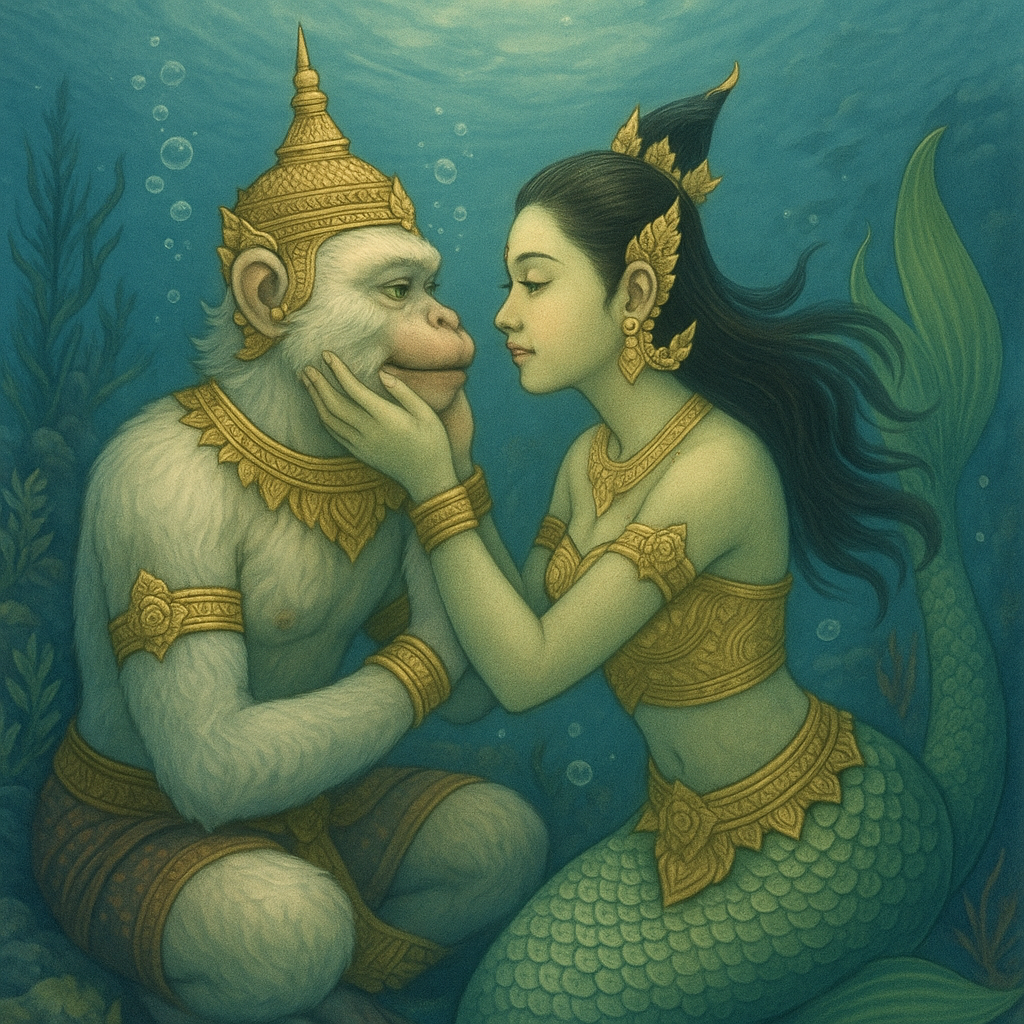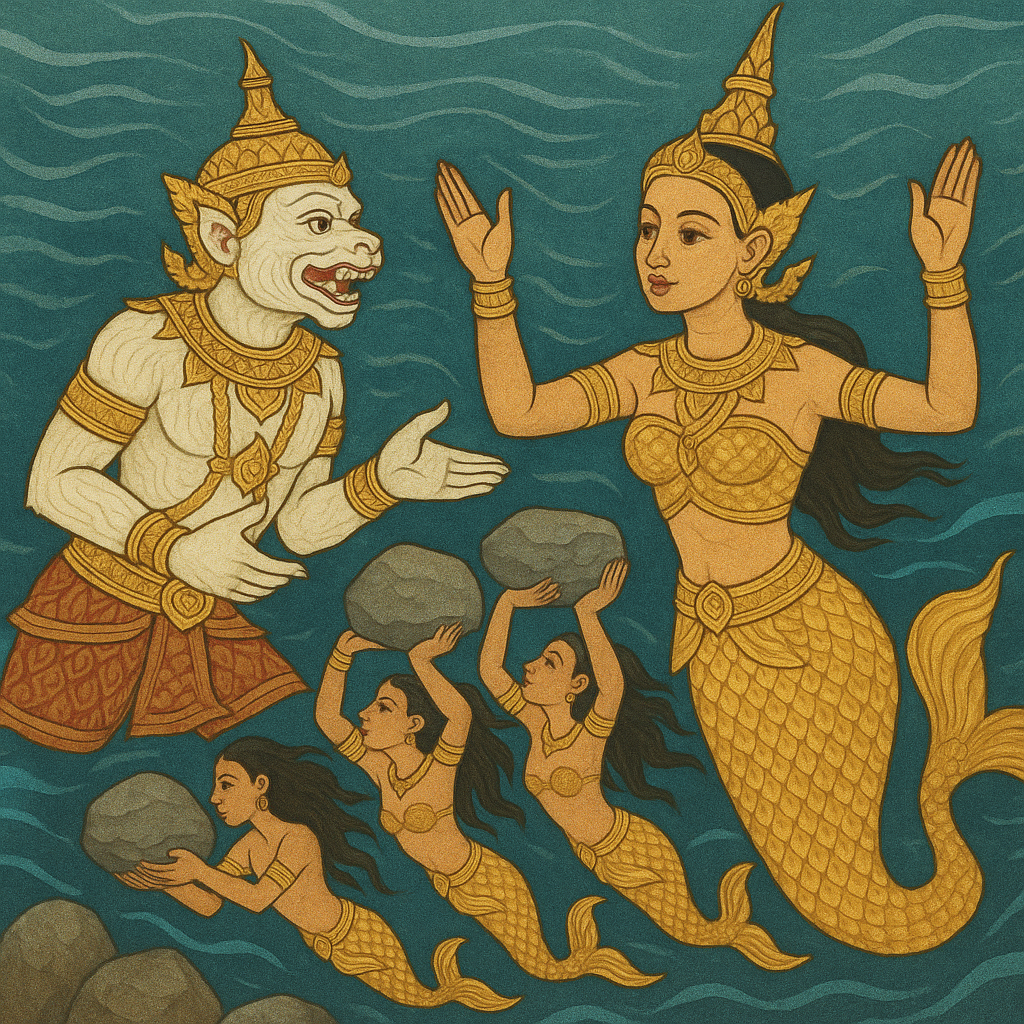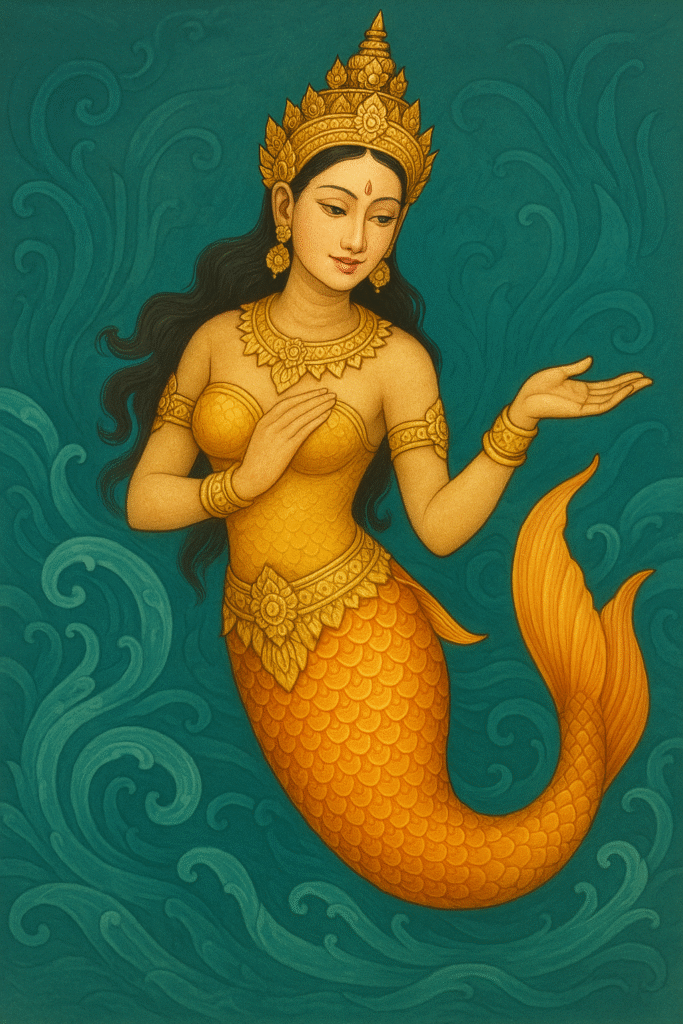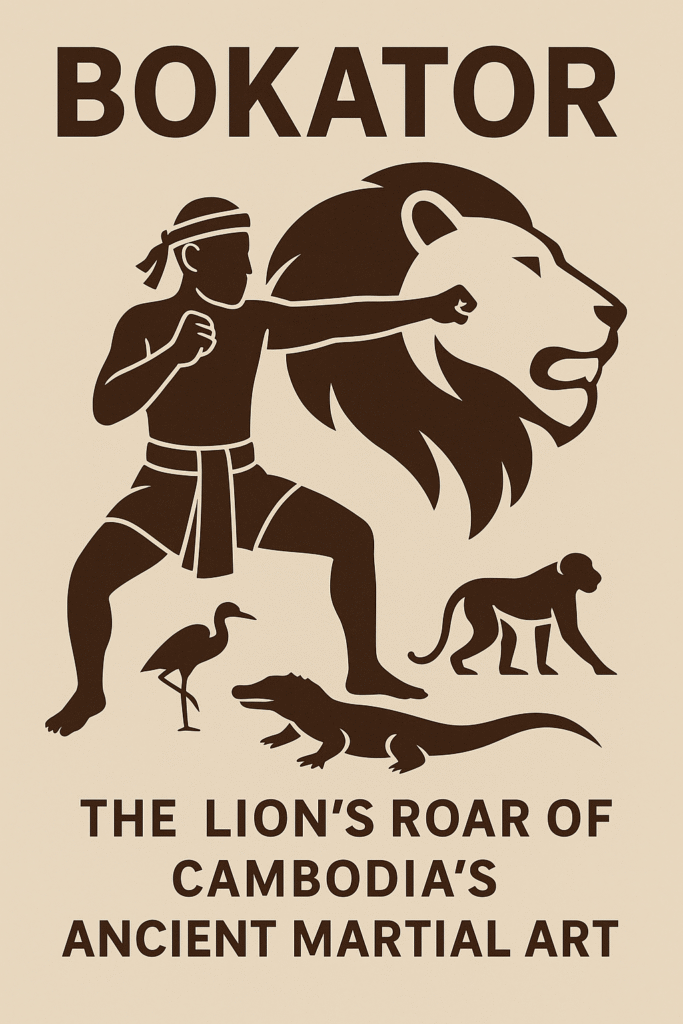Within the grand tapestry of the Khmer Reamker, Cambodia’s national epic derived from the Ramayana, are numerous captivating episodes and memorable characters. Among the most charming and visually striking is the figure of Sovann Maccha (សុវណ្ណមច្ឆា – Suvannamaccha), the beautiful mermaid princess. Her encounter with the heroic monkey general, Hanuman, provides a moment of romance, intrigue, and conflicting loyalties amidst the epic struggle between good and evil. Her story adds a unique aquatic dimension to Khmer mythology and remains a beloved subject in Cambodian classical dance and visual arts.
Hanuman’s Underwater Obstacle: The Myth Retold

The episode featuring Sovann Maccha occurs during a critical phase of the Reamker narrative. Preah Ream (Rama) and his army need to cross the sea to reach the island kingdom of Lanka and rescue his abducted wife, Neang Seda (Sita), from the clutches of the demon king Krong Reap (Ravana). The plan is to build a massive causeway of stones across the ocean.

Hanuman, Preah Ream’s loyal and incredibly strong general, leads the monkey army (vanara) in this monumental task. They diligently hurl massive boulders into the sea, working tirelessly day and night. However, they soon notice a frustrating problem: the stones they place during the day mysteriously disappear overnight, hindering their progress.

Determined to uncover the cause of this sabotage, the resourceful Hanuman dives deep into the ocean. There, he discovers an underwater kingdom teeming with mermaids and mermen. He finds them actively carrying away the boulders being dropped by the monkey army. Leading this underwater operation is the stunningly beautiful mermaid princess, Sovann Maccha, daughter of none other than Krong Reap himself. She is dutifully following her father’s orders to prevent the causeway’s completion.

Hanuman confronts Sovann Maccha. What follows is a pivotal interaction. Despite being on opposing sides of the war, they are immediately struck by each other – Hanuman by her beauty and grace, Sovann Maccha by his power, confidence, and perhaps the righteousness she senses in him. In many versions of the story, particularly those influential in performance arts, this confrontation blossoms into a brief, underwater romance.

Hanuman explains Preah Ream’s noble cause – the rescue of his unjustly abducted wife – and the unrighteousness of Krong Reap’s actions. Sovann Maccha finds herself torn between her filial duty to her father and her growing admiration and affection for Hanuman. Ultimately, recognizing the justice of Preah Ream’s quest (or swayed by her feelings for Hanuman), she makes a crucial decision. She orders her mermaid subjects to cease their sabotage and return the stolen stones, allowing Hanuman and the monkey army to successfully complete the causeway to Lanka.
(Note: Some regional variations, especially the Thai Ramakien, expand on this story, depicting Sovann Maccha later giving birth to Hanuman’s son, Macchanu, a character possessing both monkey and fish traits. This subplot is generally less emphasized in traditional Khmer Reamker narratives.)
Ocean Kingdoms: Khmer Mythology and Sea Creatures

While the powerful, serpentine Naga dominates Khmer mythology associated with water, the figure of Sovann Maccha demonstrates that mermaid-like beings also inhabit this mythical seascape.
- Naga vs. Mermaid: Nagas are primarily associated with rivers, rain, fertility, and the underworld, often depicted as multi-headed serpents. Mermaids (
neang teak– ‘water lady’, ormaccha– ‘fish’) like Sovann Maccha represent the distinct life and mysteries of the ocean itself. Given Cambodia’s significant coastline and historical maritime activities (especially during the Funan and Chenla periods), it’s natural for sea-specific mythological figures to emerge. - Aquatic Realm: Sovann Maccha and her underwater kingdom symbolize the hidden depths, the allure, and the potential dangers or obstacles associated with the sea.
Golden Fish: Symbolic Meaning of Mermaids

Sovann Maccha, whose name translates to “Golden Fish,” embodies several symbolic meanings within Khmer culture:
- Beauty and Feminine Allure: She is invariably depicted as exquisitely beautiful, representing grace, fluidity, and the captivating charm associated with both femininity and the mysterious ocean.
- Conflicting Loyalties: Her story is a poignant exploration of being caught between duty (to her father, Krong Reap) and personal conscience or love (her encounter with Hanuman). Her eventual choice to aid Hanuman highlights themes of recognizing righteousness even when it conflicts with family ties.
- Nature Spirits: Like Nagas, mermaids can be understood as powerful nature spirits embodying the specific characteristics and power of the marine environment.
Dancing Waves: Representation in Arts

The episode of Hanuman and Sovann Maccha is a favorite subject in Cambodian arts, particularly classical dance:
- Khmer Classical Dance (
Robam Boran): The role of Sovann Maccha is frequently performed in the classical repertoire. Dancers portraying her wear stunning costumes featuring scale-like patterns, elaborate fishtail elements attached at the waist, and ornate headdresses. Their movements are fluid, graceful, and undulating, mimicking the motion of swimming and capturing the essence of an aquatic being. The scene depicting the underwater encounter, the confrontation, and the budding romance between Hanuman (portrayed with energetic, simian movements) and Sovann Maccha is a popular and visually captivating dance piece. - Visual Arts: Sovann Maccha is often depicted in Cambodian paintings, illustrations, lacquerware, and sometimes temple murals or carvings (though less frequently than Apsaras or Nagas). These portrayals consistently emphasize her beauty, her fish-like lower body, and often show her interacting with Hanuman near the causeway construction site.
Currents of Storytelling: Regional Variations

While the core story of Sovann Maccha obstructing and then ceasing to obstruct the causeway exists in various Southeast Asian Ramayana traditions, nuances exist:
- Emphasis: As mentioned, the Thai Ramakien often places greater emphasis on the romantic development between Hanuman and Sovann Maccha and prominently features their son, Macchanu. The Khmer Reamker typically focuses more on the resolution of the bridge-building conflict, though the element of attraction is often present, especially in dance adaptations.
- Local Interpretations: Storytellers and performers within Cambodia might also bring slightly different interpretations or emphasis to the characters’ motivations and interactions based on local traditions or artistic choices.
Conclusion: An Enchanting Underwater Encounter
The tale of Sovann Maccha provides a memorable, romantic, and visually rich interlude within the grand epic of the Reamker. As the “Golden Fish” princess who momentarily halts, then aids, Hanuman’s quest, she embodies beauty, the conflict of duty versus conscience, and the alluring mysteries of Cambodia’s mythical seas. Her enduring popularity in the graceful movements of Khmer classical dance and other visual arts ensures that this captivating mermaid princess continues to swim through the currents of Cambodian culture today (April 2025), enchanting audiences with her timeless story.



